Aerial investigation reveals 168 previously unnoticed Nazca Lines in Peru
Archaeologists in Peru have discovered more than 100 "smaller and fainter" Nazca Lines, some of which were made by piling stones on top of each other.
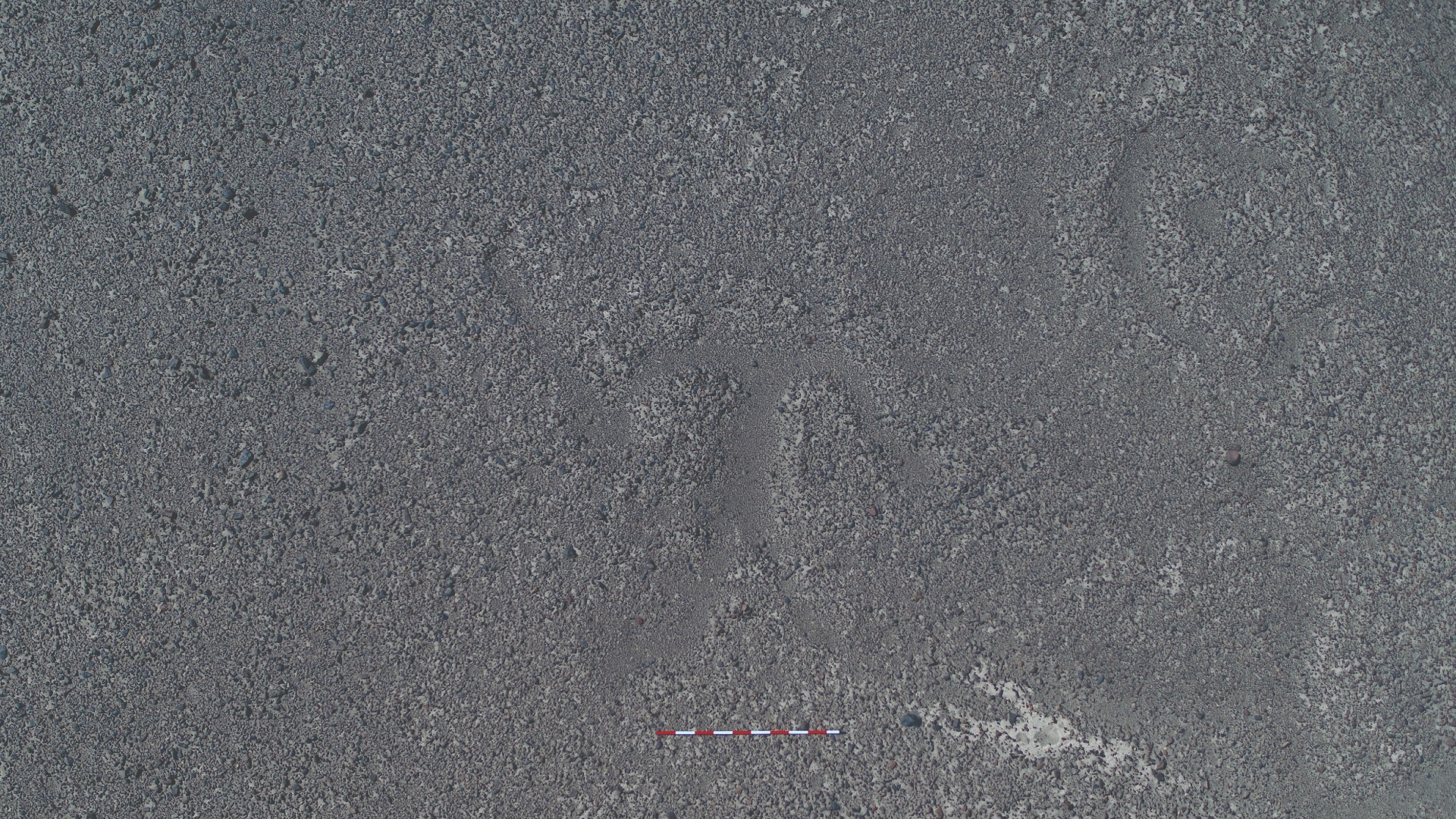
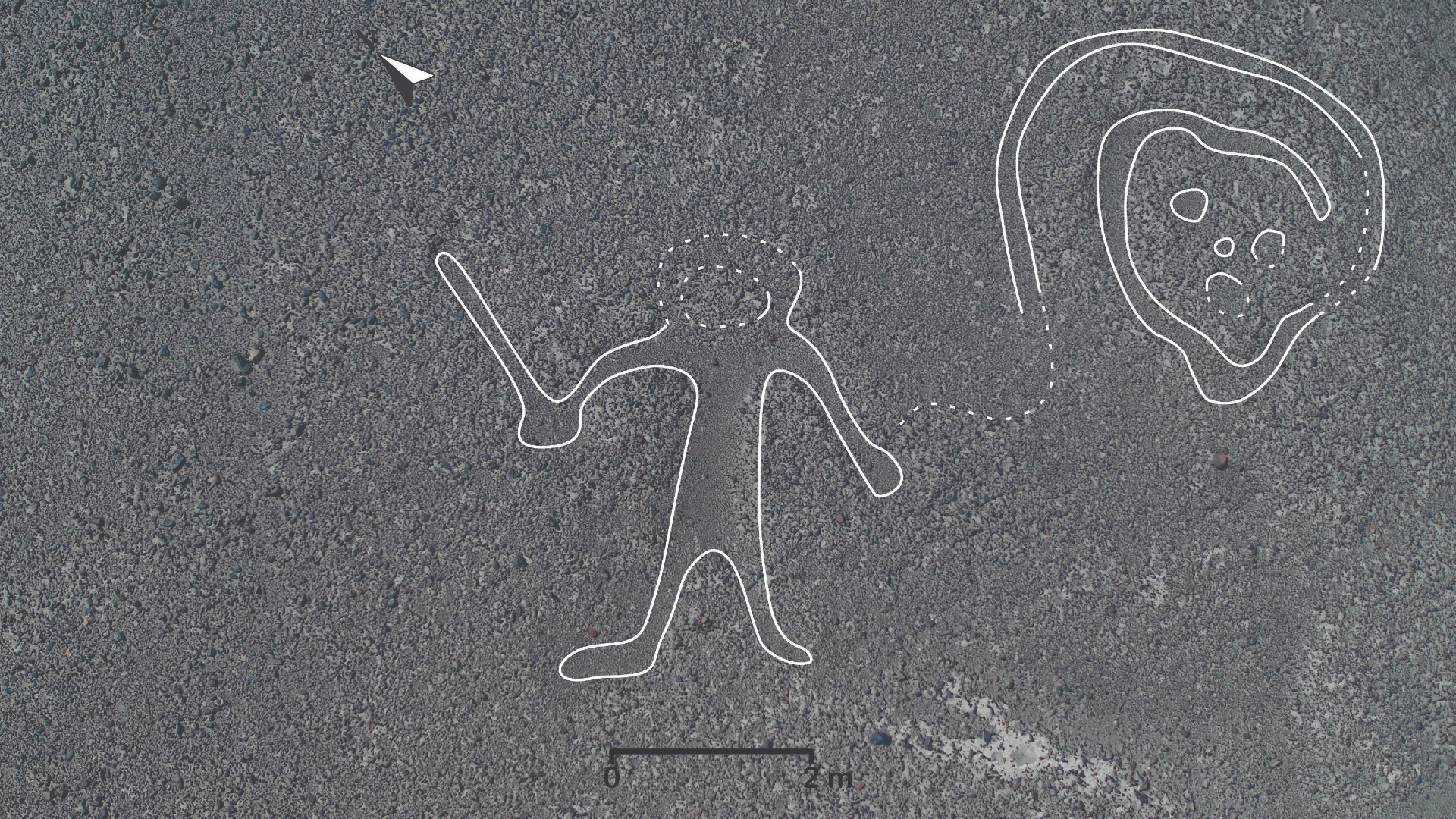
Archaeologists have discovered 168 previously unknown geoglyphs — often called Nazca Lines — that Indigenous people created more than a millennia ago in the Aja area, near the city of Nazca, Peru.
The newfound geoglyphs include outlines of humans, camelids, birds, killer whales, felines and snakes. It's unknown why prehistoric people shaped the Nazca Lines, but one idea is that these features helped the Nazca people find water in the desert.
The newly discovered geoglyphs date to between 100 B.C. and A.D. 300 and were discovered during field surveys conducted between June 2019 and February 2020 by a team from Yamagata University in Japan, which worked with Jorge Olano, the head archaeologist for the Nazca Lines research program. The team used aerial photos and drones to make the discovery, they said in a statement.
Related: New Nazca Line geoglyph discovered: A 120-foot-long cat
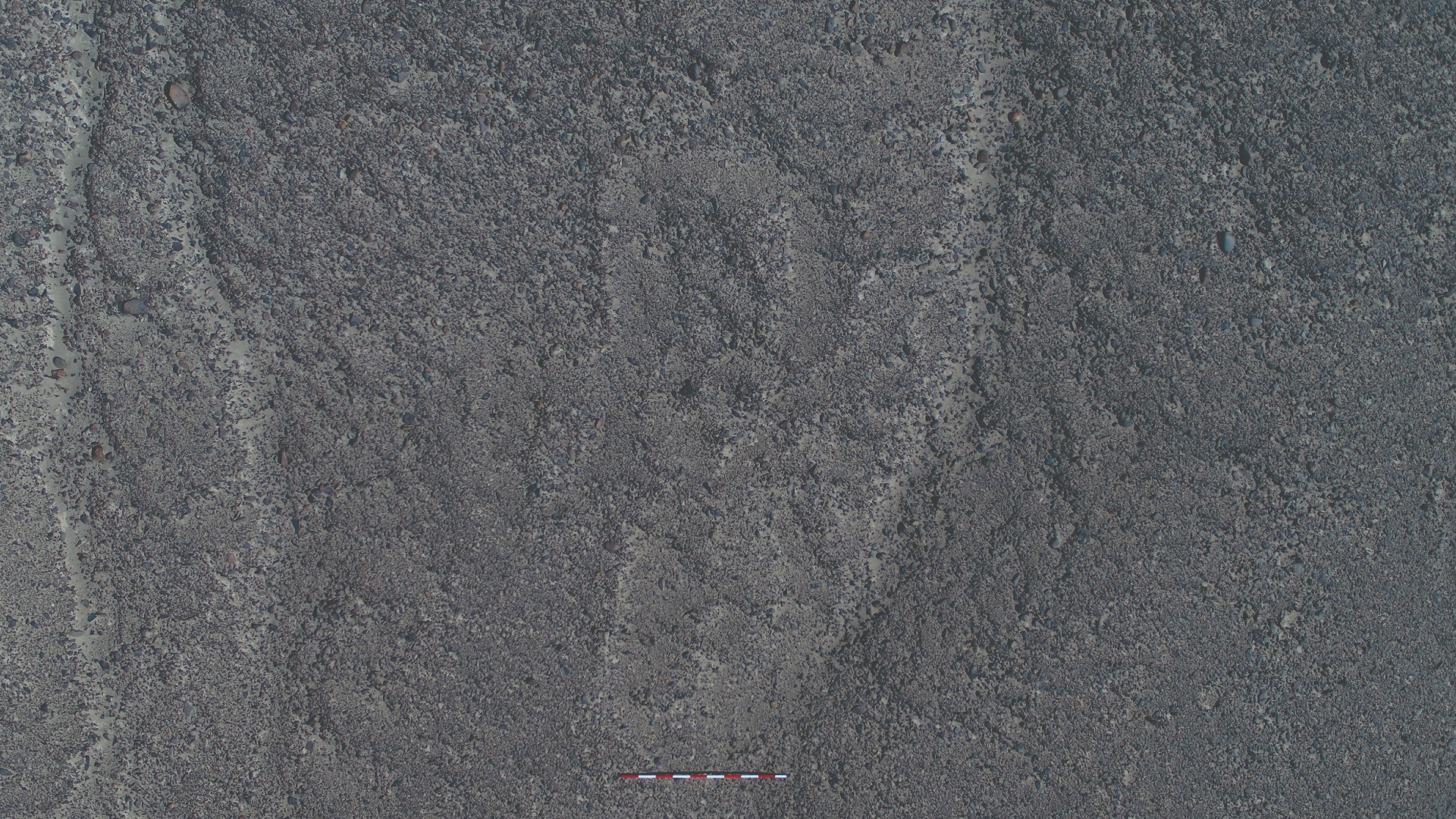
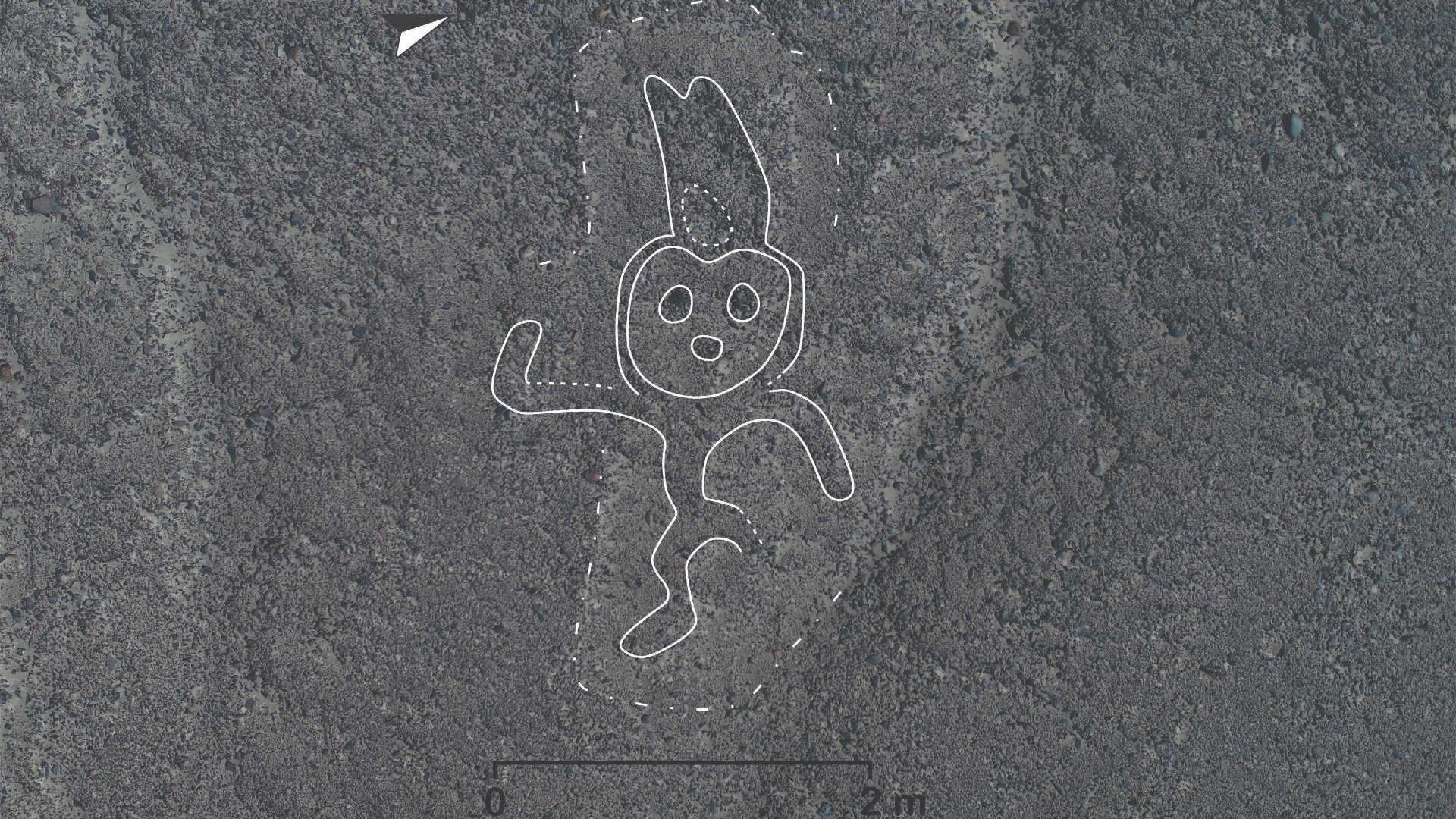
In one image, a headless human holding what looks like a stick or club stands still as their head tumbles away. But while this scene looks like it might be from a battlefield, researchers saw it another way. "I think [this scene] might be a ritual depiction, not warfare," Masato Sakai, a professor of cultural anthropology and Andean archaeology who led the Yamagata University team, told Live Science in an email. The ritual depicted may involve a beheading.
The team has been searching for geoglyphs in this area for nearly a decade now. The newfound earthen artwork brings their discoveries to 358 geoglyphs in total, they said in the statement.
The team is helping develop artificial intelligence that can detect geoglyphs by analyzing aerial images. While AI was not used to find the 168 new geoglyphs, the team hopes to use the new geoglyphs to "teach" the system to find more as they comb the countryside for more of these ancient depictions, said Sakai. "We are using these detected geoglyphs for the AI research we are currently conducting," Sakai noted.
Get the world’s most fascinating discoveries delivered straight to your inbox.
Justin Jennings, a curator of New World Archaeology at the Royal Ontario Museum in Canada who is not involved with the team's research, said that the discovery of new geoglyphs appears to be accurate.
The "excellent work of Masato Sakai, Jorge Olana and their team are providing a finer grain understanding of what happened in the region by using higher resolution imagery to discern the smaller and fainter [geoglyphs] that were previously unidentified," Jennings, who has conducted extensive archaeological research in Peru, told Live Science in an email.
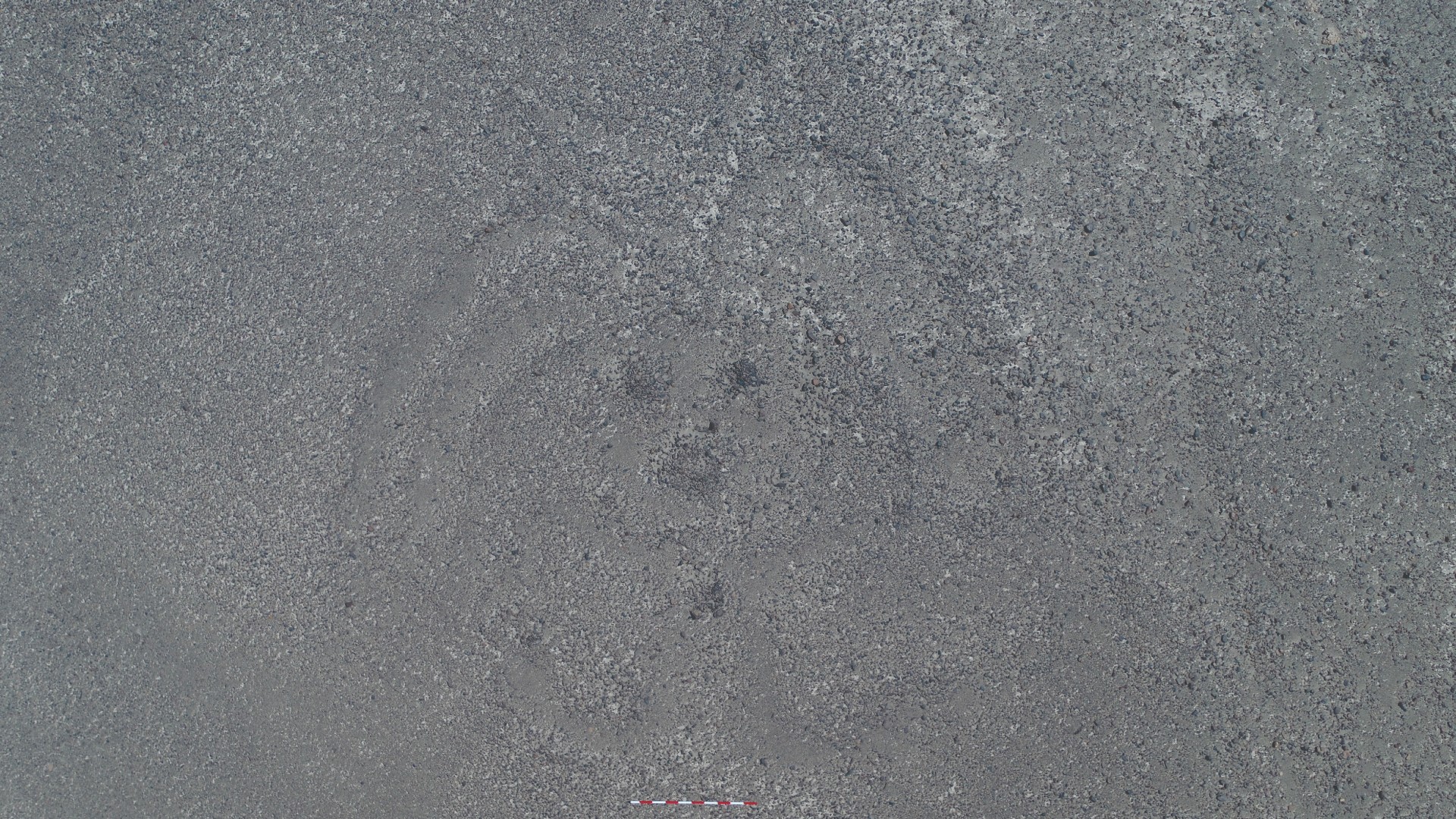

It appears that some of the 168 new geoglyphs were made, in part, by piling stones on top of each other, Jennings said. This is interesting as many of the other Nazca lines were created by removing soil and exposing the white surface underneath.
"This work shows us how we've only been seeing part of the picture as many smaller geoglyphs were made by piling stones on top of one another," Jennings said.
The team is working with authorities to create a new archaeological park in the Aja region to help protect the geoglyphs.

Owen Jarus is a regular contributor to Live Science who writes about archaeology and humans' past. He has also written for The Independent (UK), The Canadian Press (CP) and The Associated Press (AP), among others. Owen has a bachelor of arts degree from the University of Toronto and a journalism degree from Ryerson University.
 Live Science Plus
Live Science Plus





